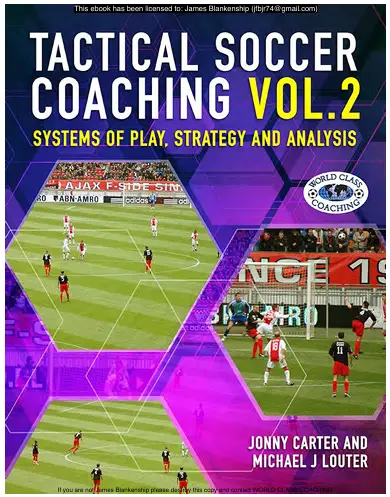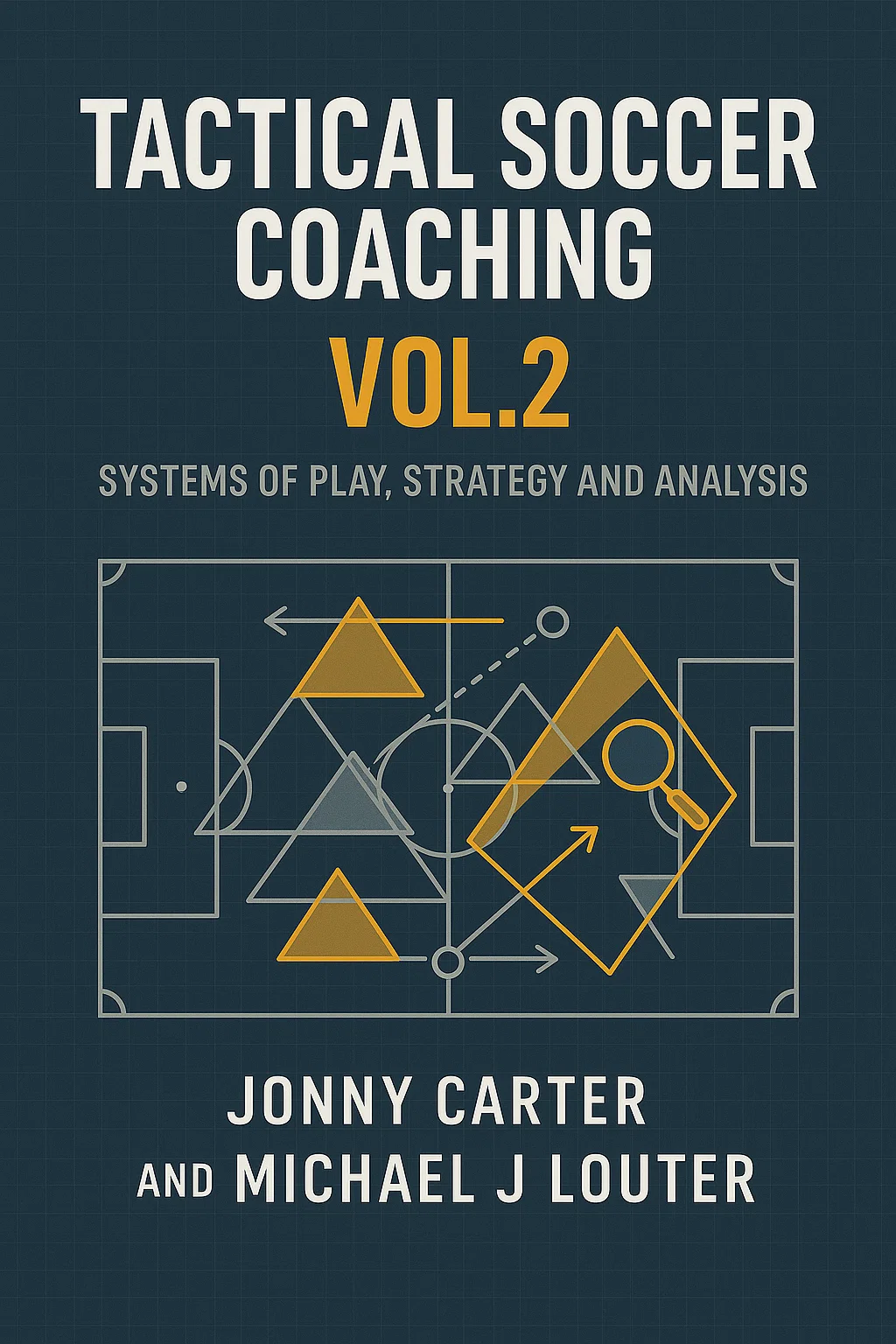Tactical Soccer Coaching Volume 2: Advanced Systems, Adaptive Play, and the Modern Coach

Tactical Soccer Coaching Volume 2: Advanced Systems, Adaptive Play, and the Modern Coach
Introduction: The Next Frontier in Tactical Mastery
Welcome to the second volume of our exploration into the intricate world of Tactical Soccer Coaching. Where the first volume established the foundational principles—the grammar of the game—this sequel ventures into the realm of advanced syntax and poetry. The modern football landscape is defined by hyper-specialization, rapid in-game adaptations, and a level of strategic complexity that demands more from a coach than ever before. This guide is designed for the coach who has mastered the basics and is ready to engage with the sophisticated, dynamic systems that define the cutting edge of the sport.
Tactical Soccer Coaching Volume 2 moves beyond static formations and rigid patterns to explore the fluid, principles-based approaches that allow teams to control matches against varied and intelligent opposition. We will delve into the art of building a multi-faceted tactical model, the science of in-game manipulation, and the psychological frameworks required to lead a modern team. Drawing from the highest levels of coaching education, such as the UEFA Pro License Course PDF, and the philosophies of visionary thinkers, this volume provides the advanced toolkit necessary to elevate your coaching and outmaneuver your rivals. The journey through these pages will transform your approach from being a manager of a system to becoming an architect of footballing intelligence.
Section 1: Philosophical Underpinnings – From System to Identity
Before designing a single drill, a coach must solidify their philosophical core. At this advanced level, a tactic is not just a plan; it is an identity.
1.1 The Principles-Based Model vs. The System-Based Model
A critical evolution in Tactical Soccer Coaching is the shift from a strict, system-based model (e.g., “We play a 4-2-3-1”) to a fluid, principles-based one. The former can be predictable; the latter is adaptable.
- System-Based: Relies on players fitting into specific, rigid roles within a fixed structure.
- Principles-Based: Focuses on universal rules (e.g., compactness, width, penetration, cover) that players execute within a flexible framework. The formation is a starting point, not a prison. This philosophy empowers players to read and react, creating a “game model” that is recognizable but unpredictable in its execution. This concept is deeply explored in the UEFA A Licence: The Complete Coach’s Guide PDF.
1.2 The Influence of Maverick Thinkers
Advanced coaching requires studying the extremists of the game. The intense, detail-obsessed, and morally rigorous approach of Marcelo Bielsas Football Philosophy PDF offers a masterclass in building a unwavering tactical identity. While not every element may be applicable, understanding such philosophies challenges a coach’s own beliefs and fosters innovation.
Section 2: Building a Multi-Dimensional Game Model
A modern team cannot have a single “plan A.” It must possess a multi-faceted game model that can be adjusted based on the opponent, the match context, and in-game events.
2.1 The Four Moments of the Game: A Holistic Framework
Elite Tactical Soccer Coaching organizes the game into four distinct moments, each requiring a dedicated strategy:
- In Possession: Your team’s attacking organization and principles.
- Out of Possession: Your team’s defensive shape and pressing triggers.
- Transition to Defend: The critical seconds after losing the ball.
- Transition to Attack: The explosive opportunity after winning possession.
A team’s game model must have a clear plan for all four. For example, a team might be possession-oriented in moment one, but use a aggressive counter-press in moment three. These plans must be trained in isolation and in combination, using specialized Soccer Training Programs.
2.2 Positional Play as an Organizing Principle
Positional Play (Juego de Posición) is the gold standard for organizing a team in possession. It is a methodology for controlling space and creating superiorities.
- Occupying Five Vertical Corridors: Ensuring width and depth to stretch the opposition.
- The Third-Man Concept: Using indirect combinations to break lines and disorganize defenses.
- Creating Superiorities: Numerical, positional, and qualitative overloads in key areas.
Implementing this requires meticulous training, often using positional possession games and rondo-style exercises, many of which can be found in the 60 Training Games PDF and UEFA A Coaching Session Plans.
2.3 Adaptive Defensive Schemes
Similarly, a team must be versatile out of possession. The coach must decide:
- Pressing Triggers: What specific event causes the team to press aggressively? A pass to a specific player? A bad touch?
- Defensive Block Height: Will you defend with a high line, a mid-block, or a low block? The choice impacts risk, reward, and the required physical and technical attributes of the players.
- Man-Oriented vs. Zonal Marking: A hybrid approach is often most effective, using zonal coverage with situational man-marking on key opponents.
These schemes must be drilled relentlessly. The foundational work for this is laid in courses like the UEFA B License Coaching Manual PDF, but is executed with far greater nuance at this level.
Section 3: The Nuances of Formations and In-Game Adaptations
Formations are not tactics, but they are the skeletal structure upon which tactics are built. The advanced coach uses formations as flexible tools.
3.1 The Versatility of Three-at-the-Back Systems
Formations like the 3-5-2 and 3-4-3 offer unique tactical opportunities that are a focus of Tactical Soccer Coaching Volume 2.
- Natural Build-Up Superiority: Three center-backs create a natural overload against two opposition forwards.
- Central Density: Allows a team to pack the central zones, both in attack and defense.
- Wing-Back Dynamics: The wing-backs provide width, creating a back five in defense and a front five in attack. Mastering their timing and integration is crucial. The Essential 3-5-2 and 3-4-3 Training Exercises PDF provides a dedicated resource for this.
3.2 In-Game Tweaks and Morphing Systems
A key marker of an advanced coach is the ability to change the game without making a substitution.
- Changing the Pressing Trigger: Instructing the team to press on a different cue to disrupt the opponent’s rhythm.
- Switching Formation: Shifting from a 4-3-3 to a 4-4-2 mid-game to gain midfield control, or to a 4-2-3-1 to add a creative presence between the lines.
- Tactical Fouls and Game Management: Understanding when and where to commit strategic fouls to break up play, and how to manage the game state (winning, losing, drawing) through possession and territory.
Section 4: The Modern Coach – Analyst, Psychologist, and Leader
Tactical Soccer Coaching at this level transcends the whiteboard. The coach is a multi-disciplinary leader.
4.1 The Analytical Edge: Using Data to Inform Tactics
Modern analysis goes beyond watching video. It involves using data to:
- Identify Opposition Weaknesses: Using pass maps and xG flow charts to pinpoint where a team is vulnerable in transition or in certain defensive zones.
- Benchmark Performance: Comparing your team’s physical output (distances, sprints) and tactical execution (passing networks, PPDA – Passes Per Defensive Action) against the league average or a specific ideal. This data-driven approach is integral to a professional The Training Plan.
- Player Profiling: Using data to identify which players possess the specific physical and technical attributes required for a particular tactical role.
4.2 The Psychological Dimension: Building a Tactical Culture
The most brilliant tactic is useless if the players do not believe in it or cannot execute it under pressure.
- Building Buy-In: Clearly communicating the “why” behind the tactical model. This is where the coach’s leadership is paramount.
- Developing Football Intelligence: Using training methods that force players to make decisions, not just follow instructions. This can be fostered through constrained games and guided discovery.
- Managing Egos and Roles: In a system, some roles are more glamorous than others. The coach must manage squad dynamics to ensure everyone commits to their tactical function for the good of the team. The environment needed for this is often cultivated from a young age, as seen in academy models like the Sheffield United F.C. U14 Academy and the Leicester City Football Club Academy PDF.
Section 5: The Training Ground – Translating Complex Theory into Practice
The ultimate test of Tactical Soccer Coaching is on the training pitch. Complex ideas must be broken down into digestible, repeatable exercises.
5.1 The Principles of Tactical Periodization
This methodology is non-negotiable for advanced coaches. It states that all training components (physical, technical, tactical, psychological) must be integrated and always trained in the context of the team’s tactical model. There is no “fitness” session; there is a “session to improve our high-press, which also has a high physical load.”
5.2 Sample Session Structures for Advanced Concepts
- Session Theme: Breaking a Low Block through the Half-Spaces.
- Warm-Up: Warm-Up Exercises with Ball PDF drills focused on quick combination play in tight spaces.
- Positional Practice: 8v8+2 in a condensed area, with zones restricting player movement to encourage play in the half-spaces. The objective is to create a shot via a pass from a half-space.
- Phase of Play: An 11v11 scenario starting with the opponent in a deep 4-4-2 block. The attacking team must work the ball to unbalance the block and create a chance, with the coach focusing on the timing of runs from the #8s into the half-spaces.
- Conditioned Game: An 11v11 where goals scored from a cross assisted from a half-space player count double.
These kinds of structured sessions are the product of detailed planning, as outlined in the UEFA B License Coaching Sessions PDF, but are elevated with greater complexity and specificity.
5.3 Set-Pieces: The Unexplored Territory of Tactical Advantage
Set-pieces are a pure expression of Tactical Soccer Coaching. They are rehearsed routines that offer a significant return on investment.
- Offensive Corner Kicks: Moving beyond simple in-swingers to structured routines involving blockers, decoy runs, and rehearsed patterns to free specific players.
- Defensive Set-Piece Organization: Zonal, man-to-man, or hybrid systems? Who is responsible for which zones? This requires the same level of detail as open-play tactics.
Conclusion: The Coach as a Permanent Student
Tactical Soccer Coaching Volume 2 has journeyed through the advanced concepts that define the modern game: from principles-based models and multi-faceted game plans to the psychological and analytical demands of the dugout. The overarching theme is that tactical mastery is not a destination but a continuous process of learning, adaptation, and refinement. The game is constantly evolving, and so must the coach.
The frameworks provided here, informed by the rigorous standards of the AFC B Diploma Coaching Course Certificate PDF and the innovative spirit of the sport’s great thinkers, are designed to be a launchpad, not a cage. The final step in your development is to synthesize this knowledge with your own unique philosophy and the specific characteristics of your players.
Embrace the role of a permanent student. Engage with the global tactical conversation on world-class external platforms like The Coaches’ Voice for direct insight from top managers and Spielverlagerung for deep, theoretical analysis. Use these resources, alongside the internal links provided throughout this volume, to challenge your assumptions and spark new ideas.
Remember, the ultimate goal of Tactical Soccer Coaching is to create a team that is not only successful but also intelligent, resilient, and expressive—a team that reflects the sophistication and beauty of the game itself. The chalkboard is yours; go and design your masterpiece.New chat

